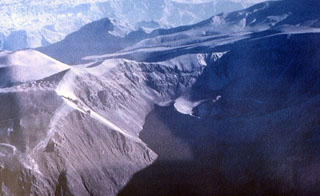Report on Huaynaputina (Peru) — 28 February-5 March 2024
Smithsonian Institution / US Geological Survey
Weekly Volcanic Activity Report, 28 February-5 March 2024
Managing Editor: Sally Sennert.
Please cite this report as:
Global Volcanism Program, 2024. Report on Huaynaputina (Peru) (Sennert, S, ed.). Weekly Volcanic Activity Report, 28 February-5 March 2024. Smithsonian Institution and US Geological Survey.
Huaynaputina
Peru
16.6144°S, 70.8542°W; summit elev. 4679 m
All times are local (unless otherwise noted)
IGP reported that at 1622 on 29 February and at 1436 on 3 March lahars descended the El Volcán drainage, on the S flank of Huaynaputina, and traveled towards the Tambo River. The public was warned to stay away from the drainage and to be cautious when traveling along the Quinistaquillas-Sijuaya highway.
Geological Summary. Huaynaputina (whose name means "new volcano") was the source of the largest historical eruption of South America in 1600 CE. It has no prominent topographic expression and lies within a 2.5-km-wide collapse depression and further excavated by glaciers within a Tertiary to Pleistocene edifice. Three overlapping ash cones with craters up to 100 m deep were constructed during the 1600 CE eruption on the floor of the older crater, whose outer flanks are heavily mantled by ash deposits from the 1600 eruption. This powerful fissure-fed eruption may have produced nearly 30 km3 of dacitic tephra, including pyroclastic flows and surges that traveled 13 km to the E and SE. Lahars reached the Pacific Ocean, 120 km away. The eruption caused substantial damage to the major cities of Arequipa and Moquengua.

